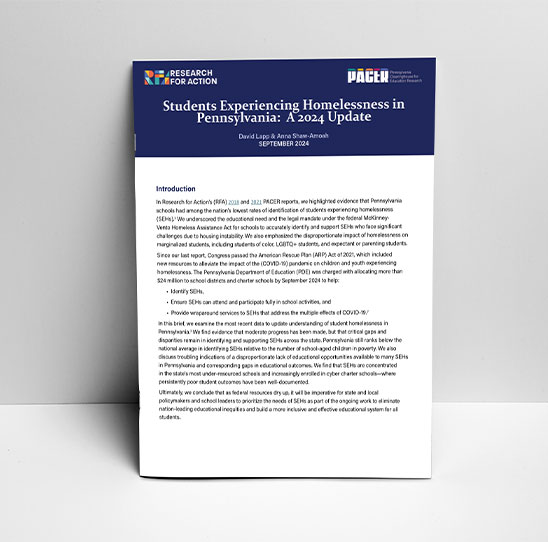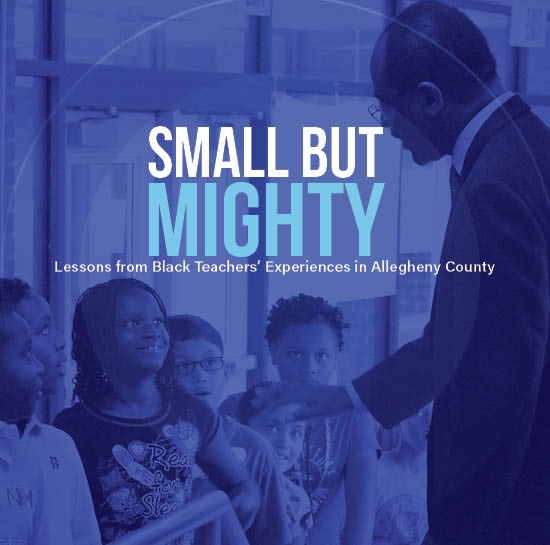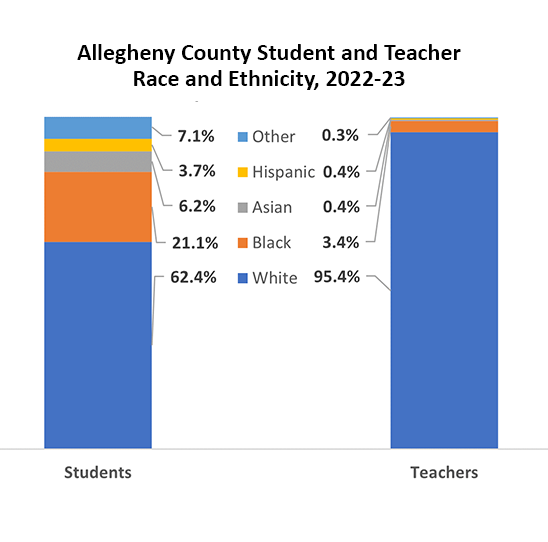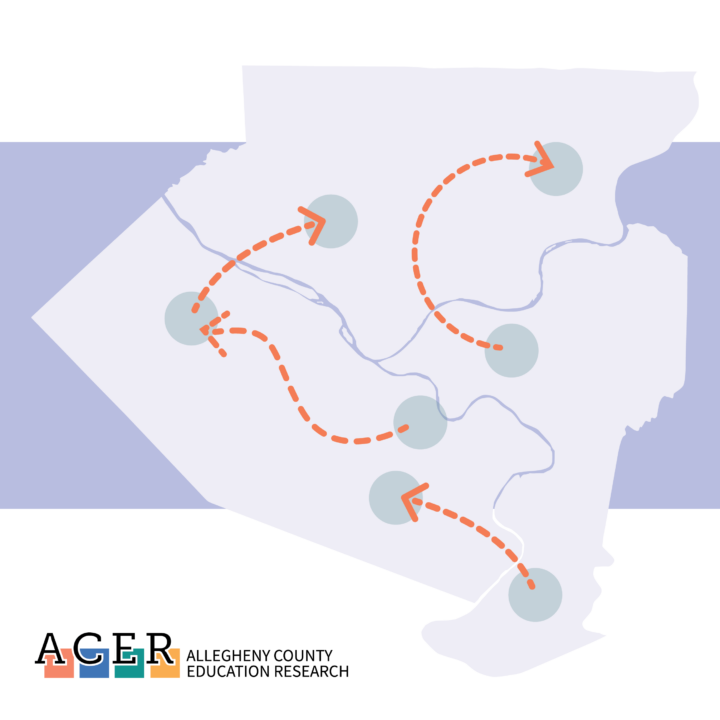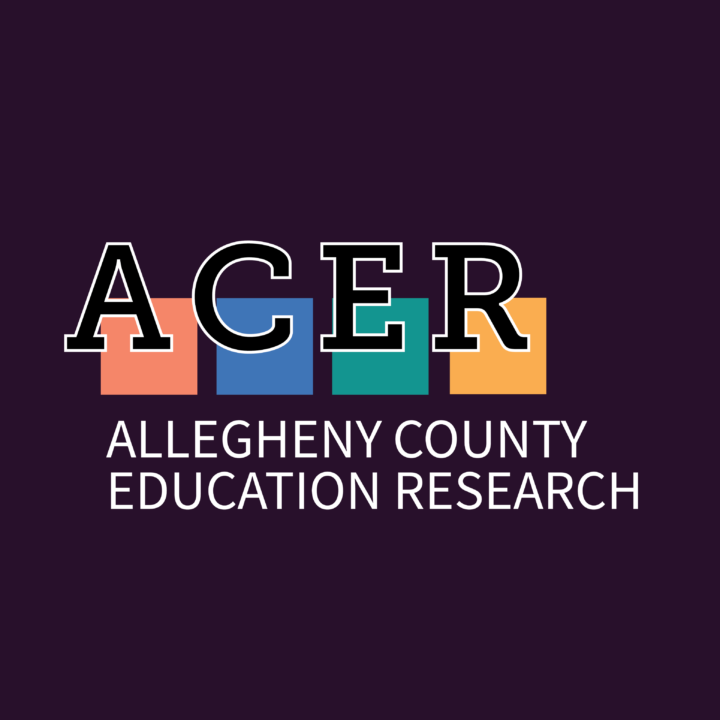In a December 2020 project, Research for Action provided statewide analysis and released seven years of new data on teacher demographics for each Pennsylvania public school. Here, as part of our ACER project, we address some frequently asked questions about teacher demographics specific to Allegheny County schools.
Q: Why does a teacher’s race or ethnicity matter?
When describing the race and ethnicity data of students or teachers we use the term “of color”, a grouping which includes students or teachers reported by the Pennsylvania Department of Education as American Indian/ Alaskan Native, Asian, Black or African American, Hispanic, Native Hawaiian or other Pacific Islander, and two or more races.
A 2018 report by Research for Action, Patching the Leaky Pipeline: Recruiting and Retaining Teachers of Color in Pennsylvania, summarized research finding multiple ways in which schools and students benefit from the presence of teachers of color (TOCs). TOCs have been shown to:
- Promote higher expectations for students of color (SOCs);
- Contribute to positive academic & non‐academic outcomes for SOCs, such as reduced absenteeism, increased admission to gifted programs, and lower dropout rates;
- Minimize chances that SOCs are subjected to discipline that removes them from school;
- Lead to positive long‐term outcomes for SOCs, like a decreased probability of dropping out in high school and an increased likelihood to aspire to enroll in a four‐year college;
- Mitigate implicit bias in all students (i.e. preconceived attitudes and stereotypes that unconsciously affect people’s understanding and decisions);
- Improve school climate for all students; and
- Reduce teacher turnover in hard‐to‐staff schools.
Q: Where can data on teacher race and ethnicity be found?
Advocates have pushed policymakers for greater transparency because it is difficult to find current data on teacher race or ethnicity. In contrast to widely available data on student demographics, the state of Pennsylvania and most districts in Allegheny County do not publish data on teacher race or ethnicity demographics.
In 2020, RFA received teacher demographic data via formal records request from the Pennsylvania Department of Education and published cleaned data sets with seven years of Pennsylvania teacher demographic data (2013-2020) for each county, district, and school. The analysis in this report is based on that data, unless indicated otherwise.
In addition, last year A+ Schools Pittsburgh included teacher demographic data that they received directly from Pittsburgh Public Schools (PPS) and city charter schools in their annual Report to the Community.
And A Broken Pipeline, a recent report from The New Teacher Project (TNTP), is accompanied by a dataset with the race or ethnicity of students in every teacher preparation program in the country, including Pennsylvania.
Note: Data for county and state public elementary and secondary teachers reflect 2019-20 rates calculated by RFA at https://www.researchforaction.org/publications/teacher-diversity-in-pennsylvania-from-2013-14-to-2019-20/.
National data on public elementary and secondary teachers is based on 2017-18 tables from the National Center for Education Statistics at https://nces.ed.gov/programs/digest/d19/tables/dt19_203.70.asp?current=yes and https://nces.ed.gov/surveys/ntps/tables/ntps1718_fltable01_t1s.asp).
Q: Where do Allegheny County’s teachers of color teach?
More than half of Allegheny County’s teachers of color (TOCs) were employed by Pittsburgh Public Schools (PPS) in 2019-2020. Notably, districts of Woodland Hills and Sto-Rox both have higher percentages of students of color (SOCs) relative to Pittsburgh Public Schools, but much lower percentages of TOCs with only 6.8% and 4.5%, respectively. The five county school districts with the highest rates of TOCs in 2019-20 are ranked below (Use the filter menu to see additional districts)
This interactive map shows that schools with the most TOCs are concentrated in and around the city of Pittsburgh. Additionally, as shown by the distribution below, 112 schools in Allegheny County (42% of all schools) had zero TOCs in the 2019-20 school year, while just 19 schools had more than 20% TOCs.
The top 10 individual schools with the highest percentages of TOCs in Allegheny County are all located within the city of Pittsburgh, shown in the table view below. (Use the filter menu to see additional schools.)
We also found that 80 schools in Allegheny County (32% of all schools) had zero TOCs for the past seven years. In those schools 18% of the students were SOCs (hover over each bar to see the percentage of SOCs in each school group).
Q: How do student race and ethnicity compare to teacher race and ethnicity in Allegheny County schools?
As discussed above, students of color (SOCs) make up 35.2% of the student population enrolled in Allegheny County public schools while teachers of color (TOCs) comprise only 4.5% of the county’s teacher workforce. This disparity is found across each race or ethnic subgroup except for White teachers, who are overrepresented relative to White students.
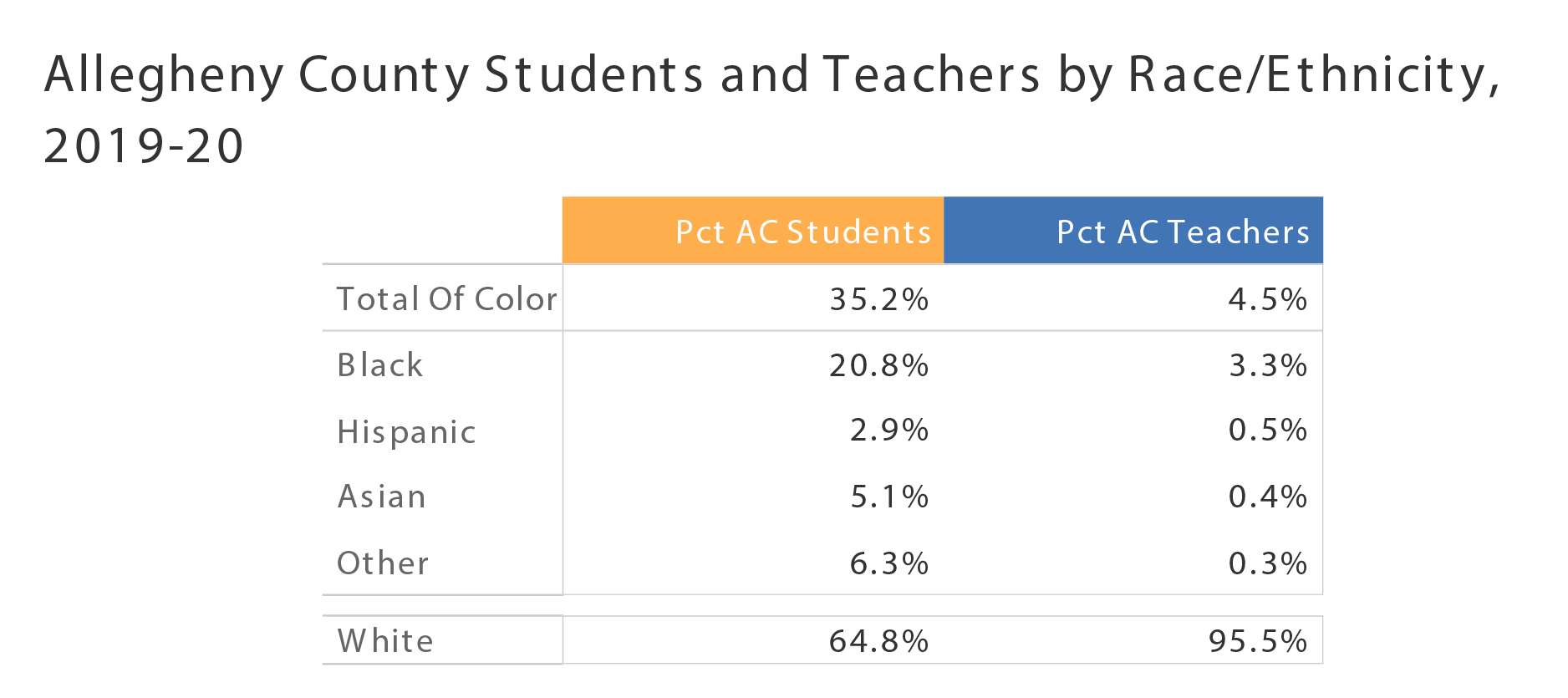
As RFA found in our state report, schools in the county with more SOCs tend to have more TOCs. However, the percentage of TOCs lags significantly behind the percentage of SOCs in nearly every school. There were only two schools in the county where the representation of SOCs did not exceed the representation of TOCs and both were in communities with relatively low enrollments of SOCs—Central Elementary School in Hampton Township School District (7% SOCs and 7% TOCs) and Avonworth High School in the Avonworth School District (10% SOCs and 11% TOCs).
Q: How do charter schools in Allegheny County compare to school districts with regard to teacher and student race or ethnicity?
It depends on the comparison. Charter schools in Allegheny County collectively employ a higher percentage of teachers of color (TOCs) and enroll a higher percentage of students of color (SOCs) than the county’s school districts. However, nearly half of the county’s charter school students reside in the city of Pittsburgh and collectively the county’s charter schools employ fewer TOCs compared to Pittsburgh Public Schools, despite enrolling higher percentages of SOCs relative to Pittsburgh Public Schools.
Q: What is the gender distribution of Allegheny County’s teachers of color?
Mirroring the state of PA, female teachers significantly outnumber male teachers (71.5% female to 28.5% male).1 Most teachers in Allegheny County’s public schools are White women (68.2%). In 2019-20, only 3.4% of teachers were women of color (367 total FTEs) and 1.2% were men of color (130.5 total FTEs).
1 Data from PDE does not reflect other gender identities, such as non-binary.
Q: How has the representation of teachers and students of color in Allegheny County public schools changed over time?
The percentage of teachers of color (TOCs) employed by Allegheny County public schools has considerably declined over the past 20 years.
The race or ethnic composition of teachers in Allegheny County schools remained relatively stable between 2013-14 and 2019-20, the seven years of Pennsylvania data published by Research for Action. However, compared to older data from the 2001-2002 school year published in the Pittsburgh Post-Gazette,2 the number and percentage of Black teachers in Allegheny County has been cut almost in half in less than 20 years. While the decline has been greatest in Pittsburgh Public Schools, there has actually been a larger proportional decline in the county overall.
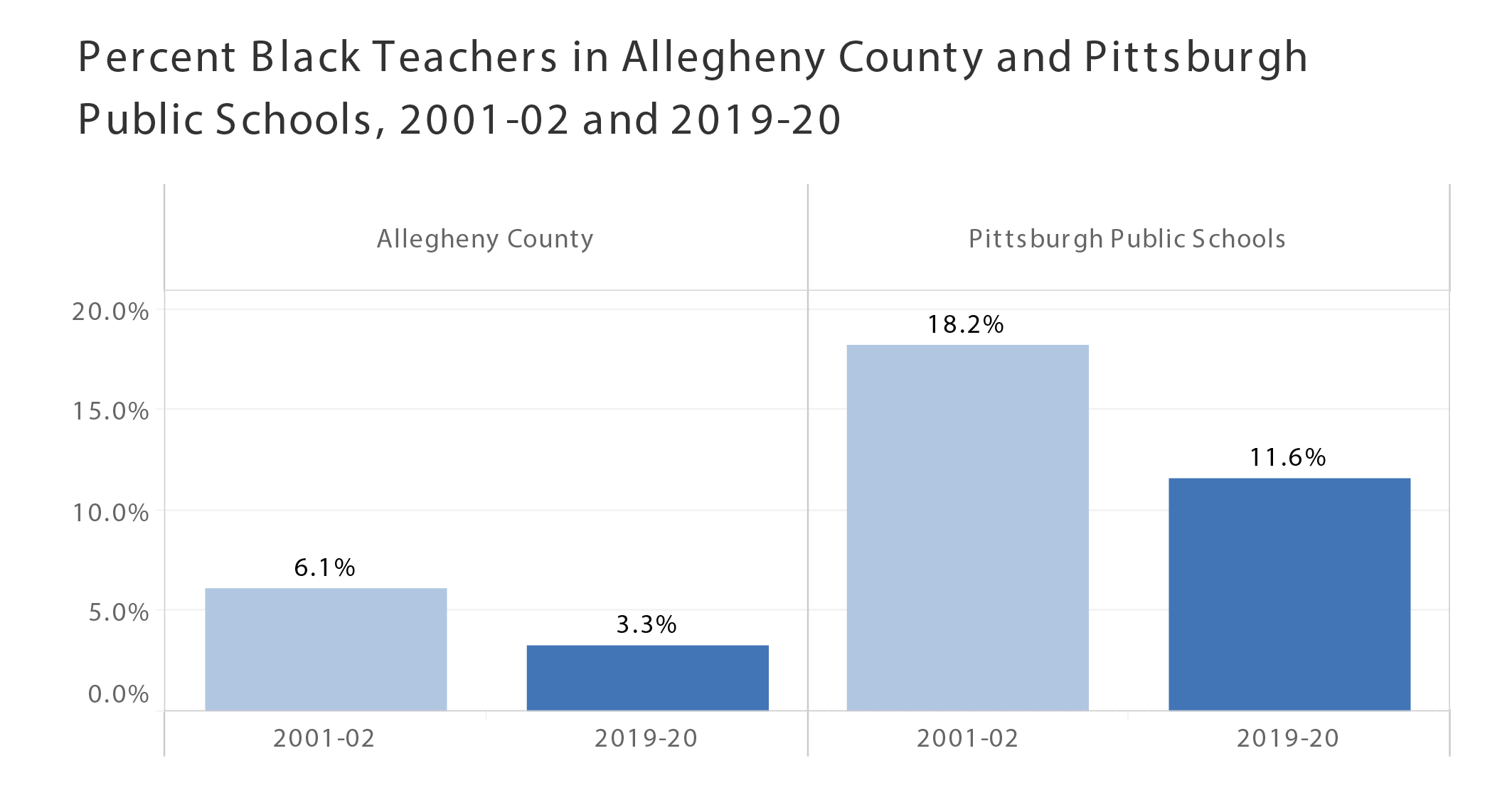
The Post-Gazette data did not include teachers of other races or ethnicities; however, there were more Black teachers alone in the county in 2001-2002 (696 Black teachers) than all TOCs in the county in 2019-2020 (497 TOCs).
As shown in the table below, there has also been a decline in the number and percentage of Black students as well as in the number and percentage of male teachers.
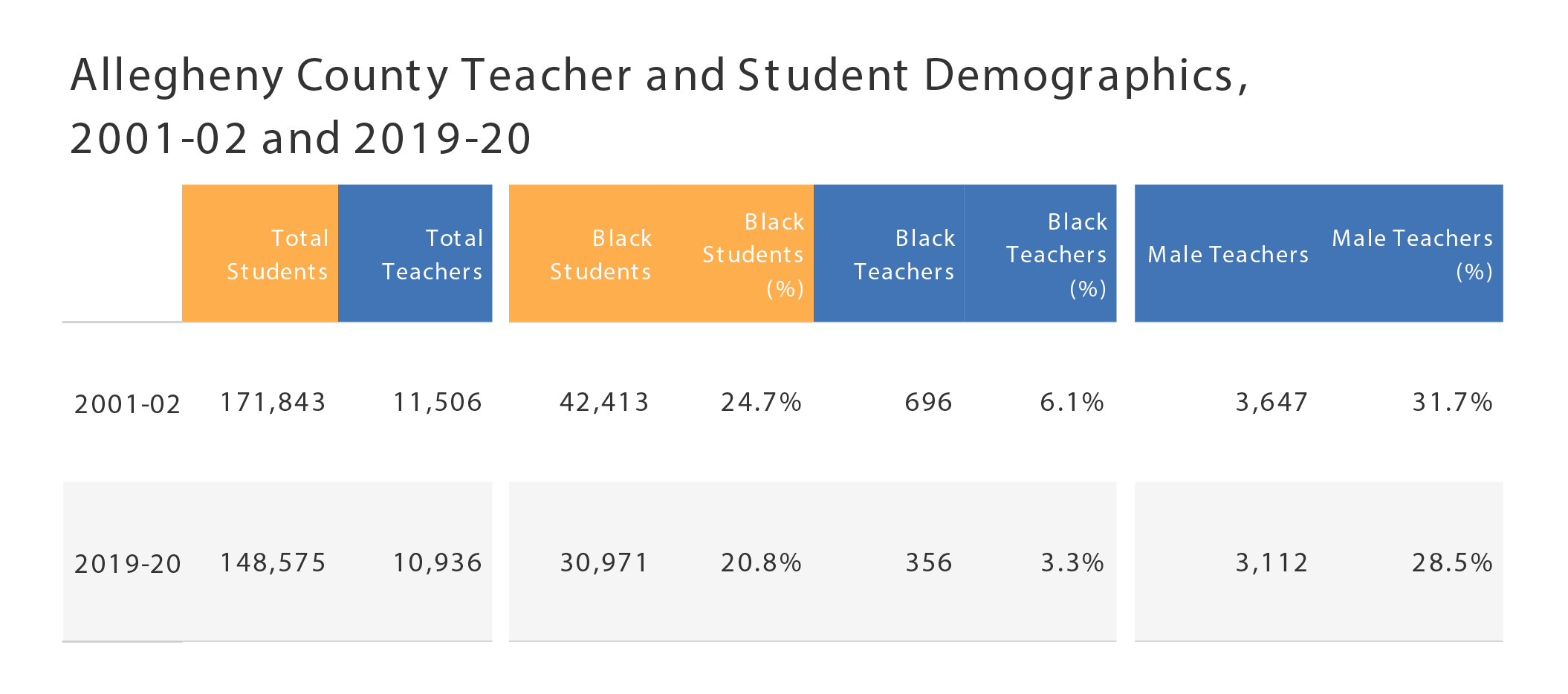
2See https://old.post-gazette.com/localnews/20030205diversityrp2.asp
Q: Have any Allegheny County schools been making progress on recruitment and retention of teachers of color?
During the seven years of available data, several county schools stand out for increasing their percent teachers of color by 10 percentage points or more from 2013-14 to 2019-20:
Q: What current efforts are being made to increase teacher diversity in Allegheny County?
There are several active “Grow Your Own” programs to recruit teachers from the local community and “Teacher Residency” partnerships between public schools and universities, which all aim to increase teacher diversity.
- Pittsburgh Public Schools’ Para2Teacher Program support eligible paraprofessionals in completing a two-year master’s degree with a tuition discount through Carlow University or Point Park University. The Para2Teacher program is supported by the Heinz Endowments, as well as the District and Pittsburgh Federation of Teachers for tuition assistance.
- Pittsburgh Public Schools’ Magnet Teaching Academy has existed for the past 30 years as an introduction into the teaching profession for students and an intentional effort to recruit a diverse teaching force. The PPS school board approved an agreement with the Pittsburgh Federation of Teachers guaranteeing graduates from the teaching magnet a job with PPS school district after completing their college degree and earning their teacher certification.
- Propel Schools’ Teacher Residency Program is designed to prepare educators who are committed to social justice and equity in education. Successful participants finish the program as Pennsylvania-certified teachers with three years of teaching experience.
We identified several other Allegheny County districts and charter schools that have announced efforts to increase teacher diversity:
- Avonworth School District’s Diversity, Equity, and Inclusion Committee discusses goals and issues around diversity and inclusion. The district has a statement of commitment to attract and retain diverse staff.
- North Allegheny School District’s diversity committee addresses ways to create and retain a diverse staff.
- Provident Charter School’s equity plan outlines methods for retaining quality educators and attracting diverse educators.
- North Hills School District is building relationships with HBCUs and local universities to build a more diverse talent pool for educators.
- South Fayette School District hired a new Diversity, Equity, & Inclusion director to work on tasks including recruitment initiatives to increase teacher diversity.
Please email meddins@researchforaction.org if you are aware of another school district or charter network that is working to increase teacher diversity.
Q: What additional resources are available to learn about strategies and initiatives to increase educator diversity and better understand the historical context and root causes of disparities?
More research is needed to fully understand the specific experiences of Black and other teachers of color in Allegheny County. However, researchers across the country have identified multiple factors that have shaped the demographics of the teaching profession, including inequitable pay, challenging working conditions, lack of access to quality professional development and preparation for licensure exams, lack of autonomy, and lack of voice in school decision-making. Many of these factors are direct consequences of centuries of structural racism, unequal school funding, and workplace discrimination.
Meanwhile, researchers have identified multiple promising strategies for improving teacher recruitment and retention and even as greater attention is needed at all levels to improve policymaking and practice, there are several initiatives underway to improve educator diversity in Pennsylvania and the nation.
Below are resources to learn more about these issues:
